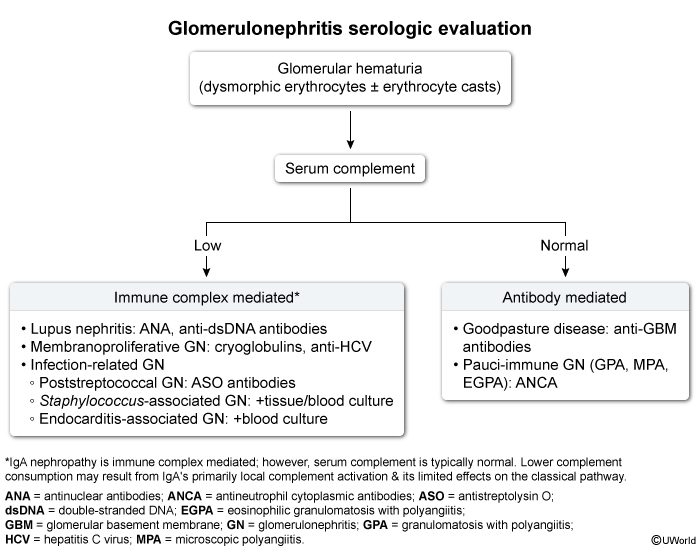Staphylococcus-Associated Glomerulonephritis
Article Sections
Introduction
Staphylococcus-associated glomerulonephritis (SAGN) involves immune-mediated kidney injury triggered by staphylococcal infections, typically with Staphylococcus aureus. It is primarily seen in adults, in contrast to poststreptococcal glomerulonephritis (PSGN), which is more commonly seen in children (although it is occasionally seen in adults). SAGN occurs during infection or shortly after infection resolution, whereas PSGN arises several weeks following infection. Other causes of infection-related glomerulonephritis (GN)—including endocarditis-associated GN and GN due to nonbacterial infections (eg, hepatitis C virus infection)—are discussed in separate articles.
Pathophysiology and risk factors
SAGN arises when antibodies form immune complexes with staphylococcal bacterial antigens, depositing in glomeruli and activating the complement cascade (primarily the alternative pathway). This triggers inflammation, leukocyte infiltration, and glomerular injury. SAGN occurs concurrently with active infection from a variety of sources, most commonly cellulitis, osteomyelitis, and pneumonia. Risk factors include diabetes mellitus, cirrhosis, heavy alcohol use, and immunosuppression (eg, HIV, chemotherapy), all of which increase the risk for bacterial infections.
Continue Learning with UWorld
Get the full Staphylococcus-Associated Glomerulonephritis article plus rich visuals, real-world cases, and in-depth insights from medical experts, all available through the UWorld Medical Library.
Figures
